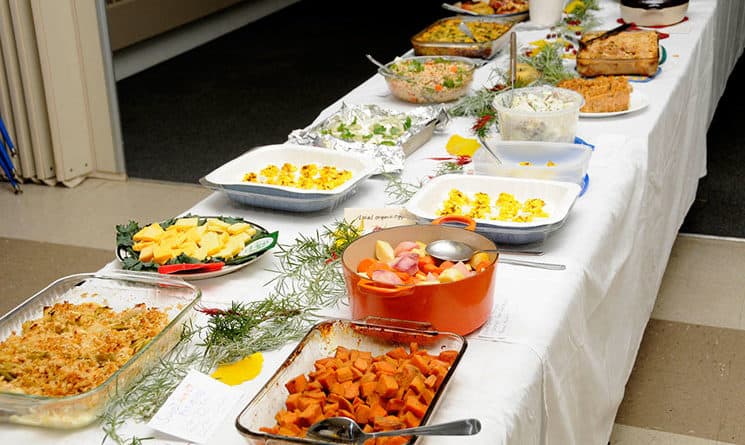Editor’s note: The University of New Hampshire Cooperative Extension provides weekly gardening columns in which Jeremy DeLisle answers questions from local gardeners and others.
Q: Every Thanksgiving, my family gathers for a big potluck buffet, and food sometimes stays out for hours. How can I make sure the food is handled properly and stays safe to eat? — Frank S of Bow
A: When it comes to food safety, we are fortunate to have reliable resources to guide us as we prepare the meals for those who mean the most to us. Whether it’s turkey or ham, veggies or sweets, it’s important that we understand and follow good food-safety practices each step of the way.
Bacteria are everywhere, and a few types especially like to crash parties. These bacteria can cause illness and are spread by improper food handling. Follow these guidelines to keep everyone at your table safe and healthy.
Cleanliness is key
Always wash your hands before and after handling food. Keep your kitchen, dishes, and utensils clean and serve food on clean plates. Never use plates or dishes previously in contact with raw meat and poultry. Bacteria that may have been present in raw meat juices can cross contaminate the food to be served.
Monitor cooking temperatures
Cooking meats to the proper temperature is the best way to ensure they are safe to eat. The USDA recommends cooking all raw beef, pork, and lamb portions to a minimum internal temperature of 145 degrees Fahrenheit. Measure the temperature with a food thermometer. For safety and quality, allow meat to rest for a few minutes before carving or consuming. Raw ground beef, pork, lamb, and veal should be cooked to an internal temperature of 160 degrees. Cook all poultry to a safe minimum internal temperature of 165 degrees.
Storing, reheating, and serving
We all know that cooking for large holiday gatherings often starts a couple of days beforehand. The USDA recommends best food-safety practices for that scenario, too.
Divide cooked foods into shallow containers to store in the refrigerator or freezer until serving. This encourages quick, even cooling. Reheat hot foods to 165 degrees. Arrange and serve food on multiple small platters rather than on one large platter. Keep the rest of the food hot in the oven (set at 200-250 degrees) or cold in the refrigerator until serving time. This way, foods will be held at a safe temperature for a longer period of time.
Replace empty platters rather than adding fresh food to a dish that already had food on it. With many people’s hands touching the food, including busy little children, it’s best to start fresh as you continue to serve your guests.
Remember the “Two-Hour Rule.” Foods should not sit at room temperature for more than two hours. Keep track of how long foods have been sitting on the buffet table and discard anything that’s been there for two hours or more.
Hot foods should stay hot and cold foods cold. Hot foods should be held at 140 degrees or warmer. On the table, you can keep hot foods hot with chafing dishes, slow cookers like crock pots, or warming trays. Cold foods should be held at 40 degrees or colder. Keep foods cold by nesting dishes in bowls of ice. Otherwise, use small serving trays and replace them frequently.
For additional resources, visit the Food Safety at Home section of the UNH Cooperative Extension website, and check out the article Food Safety Tips for a Healthy Holiday by Extension food safety specialist Jessica Sprague.
Jeremy DeLisle is the program coordinator for the UNH Cooperative Extension Education Center. The center answers questions about gardening and more at answers@unh.edu, or by calling 877-398-4769, Monday through Friday, between 9 a.m. and 2 p.m.

